Glock Stippling: The Complete Pistol Guide
Glock frame stippling is the answer. This upgrade to your Glock® is both fashionable and functional. It is one of the easiest and cheapest upgrades you can make. It will make you stand out at the range.
First, a legal disclaimer:
Unless specifically noted otherwise, products mentioned in this blog are not authorized, endorsed, manufactured or warrantied by GLOCK. GLOCK does not guarantee that these products are compatible with GLOCK pistols.
“GLOCK” is a federally registered trademark of GLOCK, Inc. and GLOCK Ges.m.b.H.. Neither 80 Percent Arms nor this website are affiliated in any manner with, or otherwise endorsed by, GLOCK, Inc. or GLOCK Ges.mb.b.H.. The use of “Glock” on this page is merely to advertise the sale of GLOCK-style pistol frames, components and aftermarket parts or services that are compatible with Glock products. For additional genuine GLOCK, Inc. parts and products please visit www.glock.com.
HOW TO STIPPLE A GLOCK
Stippling is essentially burning a pattern into polymer material on your firearm. Many companies offer stippling services for guns. However, this article will teach you how to do it yourself. It will provide step-by-step instructions.
WHAT CAN YOU STIPPLE?
Stippling is pretty exclusive to polymer handguns. Gun owners will also sometimes customize their ARs or AKs with grips and other parts. However, this article will focus on Glock pistols and Glock style frames.
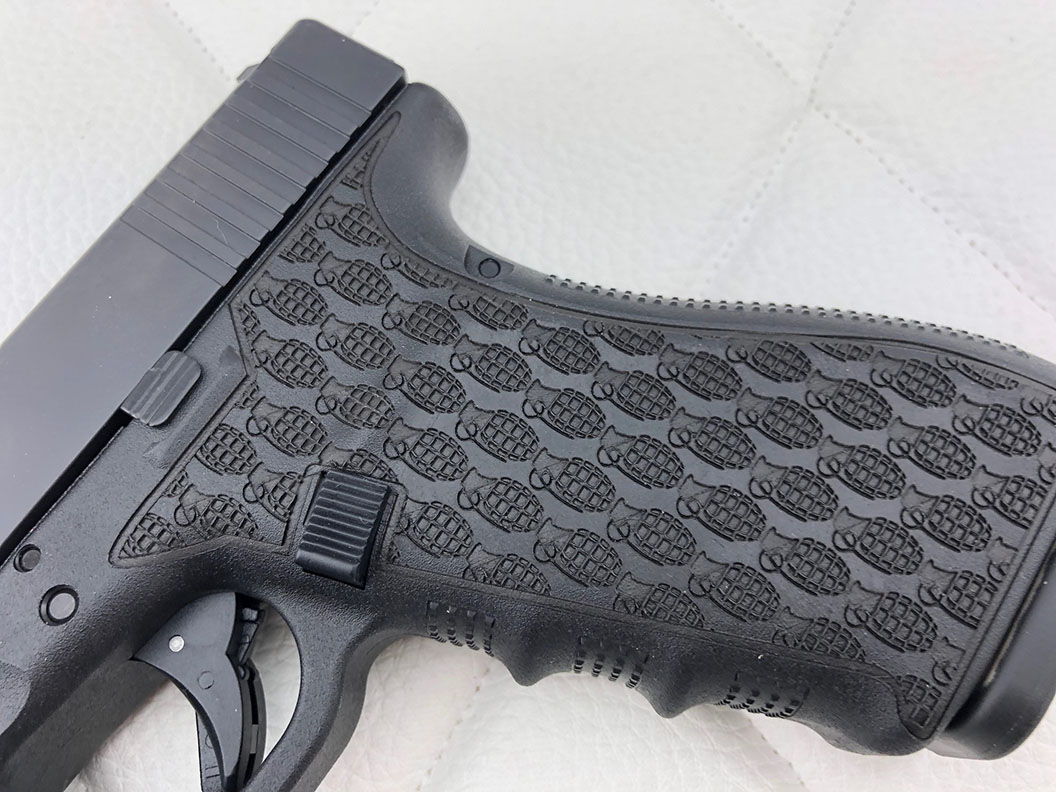
With modern laser stippling, the sky is the limit for creativity. Photo Source: Black Rose Firearms
WHY STIPPLE YOUR GLOCK?
There are a few different reasons to stipple, the main two being added grip and aesthetics. Many handguns come with sub-par grips from the factory. This leaves the consumer looking for aftermarket grips to customize their handgun.
Stippling is an effective and semi-permanent solution for firearms. It can add a unique look, making the firearm stand out. Many people customize their Glocks.
Removing or reshaping finger grooves is the most common reason to modify a firearm. (This applies to Gen3 and earlier users, and includes the trigger guard)
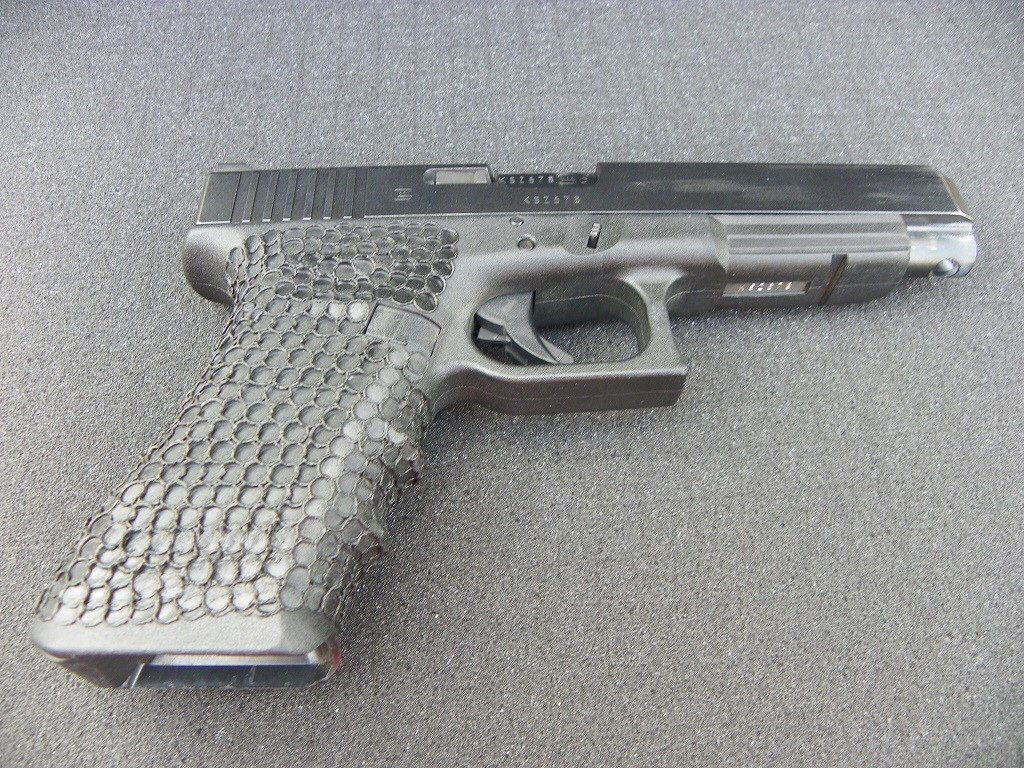
Not all stippling jobs are equal. RIP to this Glock after an overzealous owner overestimated his skills. Photo Source: The Firearm Blog
CONSIDERATIONS BEFORE STIPPLING
Stippling can be a great upgrade to your handgun. Before making this very permanent mod, however, there are a few things to consider.
A) If you intend to resell or trade your gun, be aware that stippling may reduce its value. Certain patterns, levels, or grips may turn away potential customers. Stippling is very much done by personal preference, so your preferences might vary from others.
B) Stippling will void your warranty. You are changing the structure of the firearm to the point of no return. If there is a catastrophic failure, don't expect help from the gun manufacturer.
C) Possibility of ruining your firearm. Stippling literally melts the polymer of your frame. If you aren't careful when undergoing the process you may go too deep or melt the wrong part on accident.
D) Your gun could smell. This is a weird side effect of stippling, but it does happen on occasion. You are increasing the depth of the grip. This can cause skin, dirt, and other debris to accumulate in the stippling pattern.
As this debris starts to break down, a smell will start to surface. While this is easily negated by cleaning your grip, it is a factor to consider.
E) I always recommend practicing on a sheet of plastic before directly working on your own gun. There are lots of cool patterns out there but what if you don’t end up liking the feeling of it?
Functionality and comfort are always more important than aesthetics. Try to create your desired pattern on something first to make sure you really like how it feels in the hand. Too much grip is almost as bad as not enough grip - making range days painful and unbearable.
STIPPLING TOOLS
It doesn’t take much to stipple, and you can pick up the tools at any local hardware store.
Soldering Iron. Any cheap soldering iron will do, usually found for less than $10, this is an incredibly cheap upgrade to do yourself.
A Clean Workspace. Avoid any debris or grime getting into your polymer as you stipple. Make sure you are doing this in a clean location.
GLOCK STIPPLING PATTERNS
If you can think of a pattern, you can stipple it. Different Glock Stippling patterns will grip differently, and grip harder on certain parts of your hand. You may have calluses on your hands from shooting. To make shooting more comfortable, I suggest putting a pattern on the grips that hardens the callused areas. A few popular patterns include:
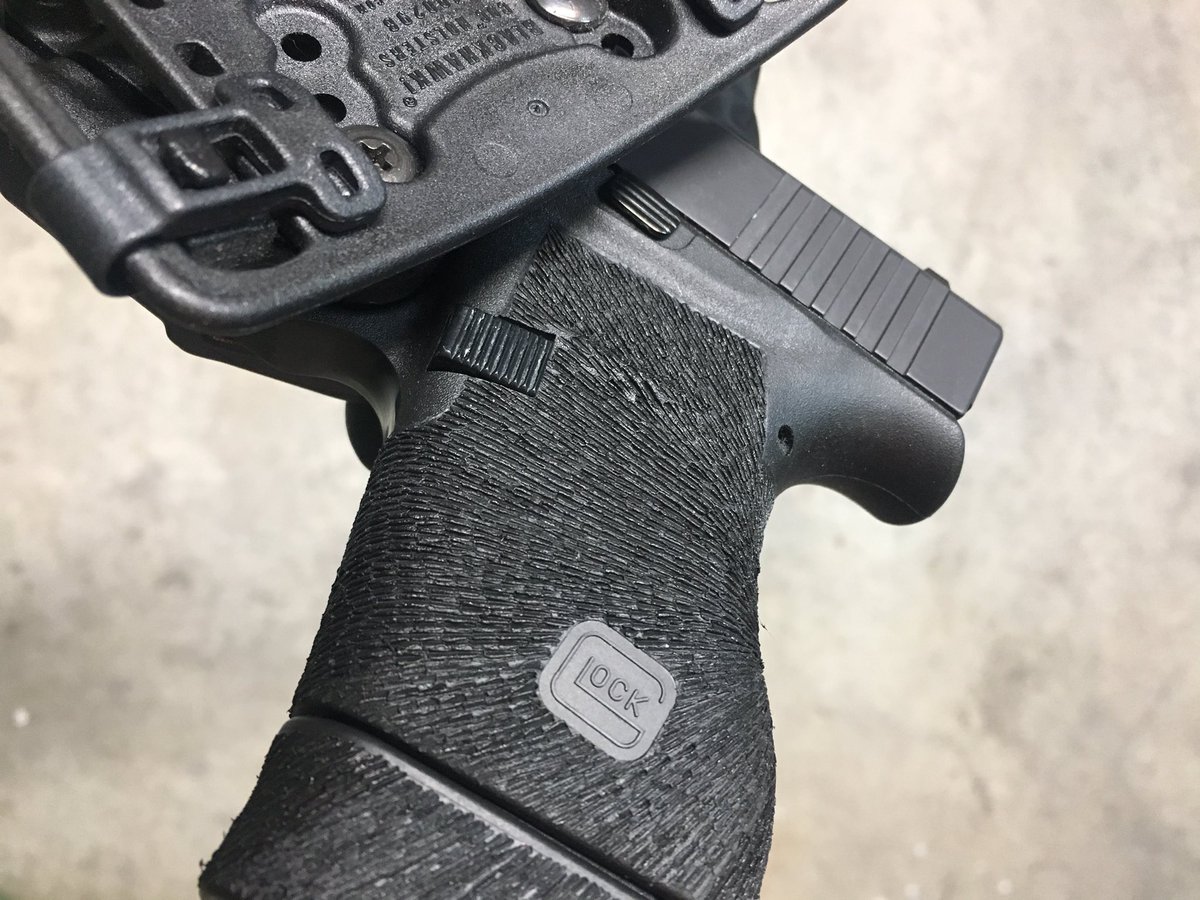
Starbust Stippling. Photo Source: Travis McIntosh
1) The Starburst Pattern: This pattern stems from one spot usually on the back side of the grip, and “bursts” out in straight lines. It offers a cool look, with a medium-level grip.
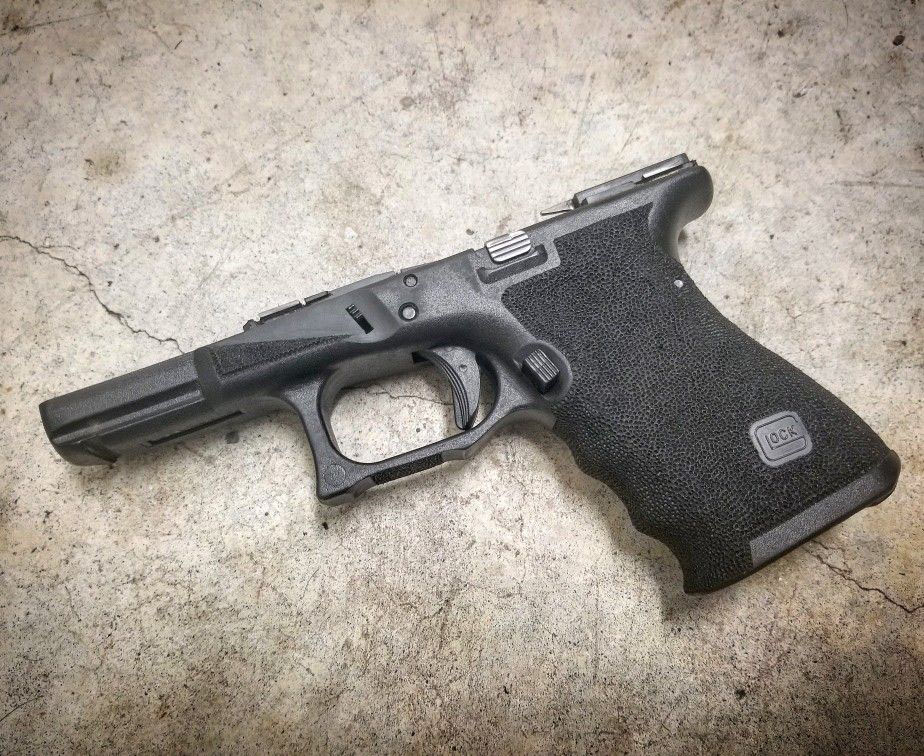
Random Microdot Stippling. Photo Source: Travis McIntosh
2) Random Dot Pattern: This is actually my favorite style of stippling simply because I like the look, and it tends to offer some of the best grips. You can vary the depth of the dots to customize the level of grip you prefer, and when coupled with a good outline; I think this pattern looks great.
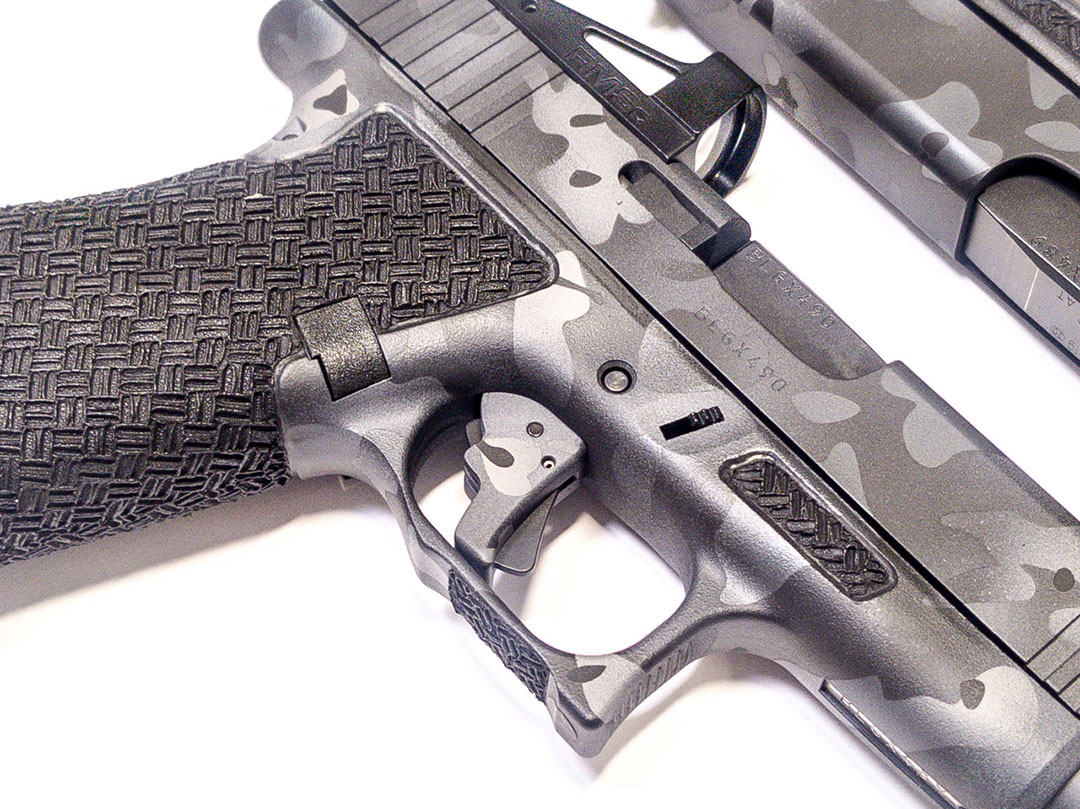
3) Basket Weave Pattern: This pattern is really popular, and actually offers really tough grip. I don’t prefer the aesthetics of the pattern, and the pattern doesn’t seem to agree with my preferred grip, but this is among the favorites of many.
THE STIPPLING PROCESS
Stippling a grip has evolved in the past several years from something done only by the most serious shooters in their garage with a hand tool to something now made accessible to anyone interested in improving the form or function of their firearm.
Glock laser stippling and professional services are increasingly popular, but many shooters will still do it at home. Despite being time-consuming, many shooters prefer the DIY aspect of the project and would prefer to work on their guns themselves.
HEATING THE STIPPLE TOOL
By now you have your gun and pattern picked out, and you are ready to get started. Begin by heating your soldering iron to max temperature. If your gun has interchangeable back straps that you aren’t using you can test the tool on one of them. The polymer should melt easily without much force.
OUTLINE FIRST
It is a smart idea to create the outline of your grip first. This gives you a clear picture of what it is you want to stipple, and you have a higher probability of creating a clean, aesthetically pleasing finished product. If you want to get creative with the outline and add in some cool angles or edges then go for it! The cool thing about doing this yourself; you are completely in charge of what the finished product will look like.
FILL IN THE OUTLINE
Working from the outside in, begin to create your desired pattern. Try to make the depth uniform, so the grip will feel the same through the hand. Be careful to not go too deep.
CLEAN UP THE EDGES
Once you are pleased with your finished pattern, go back and straighten up/modify any of your edges, angels, or outlines. This is the final step in the actual stippling process. Having a very fine "border" is what completes the package of a great stipple job.
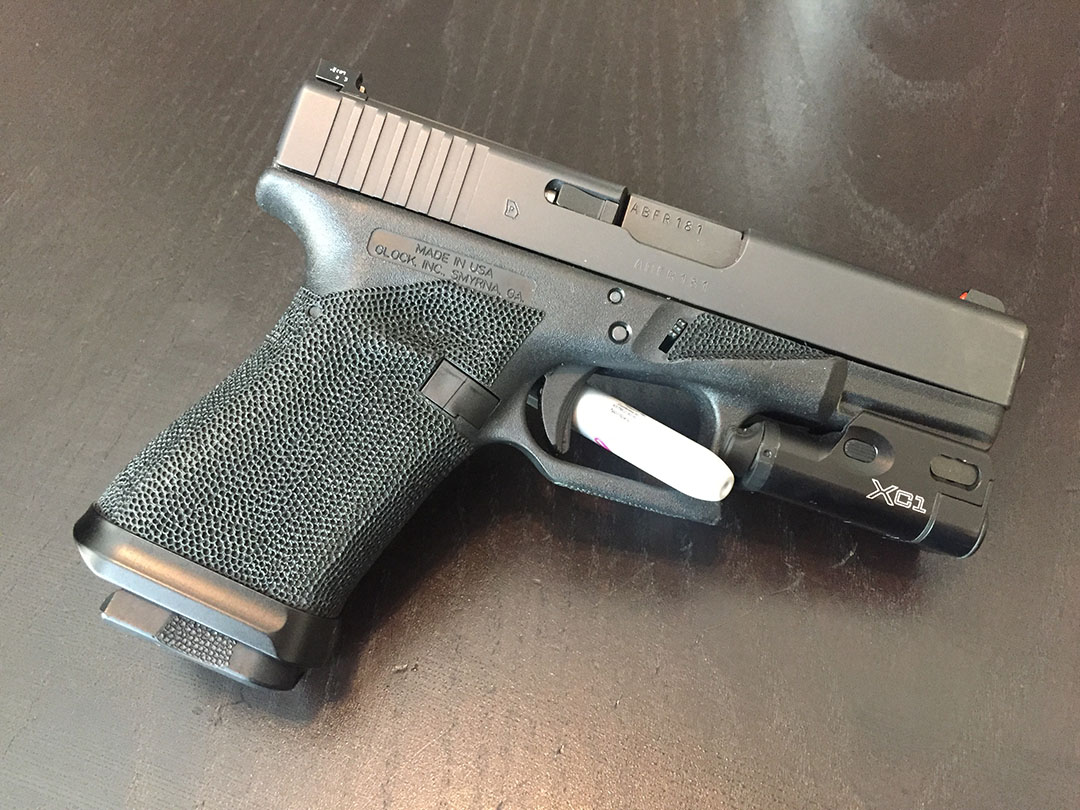
This dot pattern stipple took an afternoon, but it was time well spent for how well it grips. Photo Source: ARFCOM
ALTERNATIVES TO STIPPLING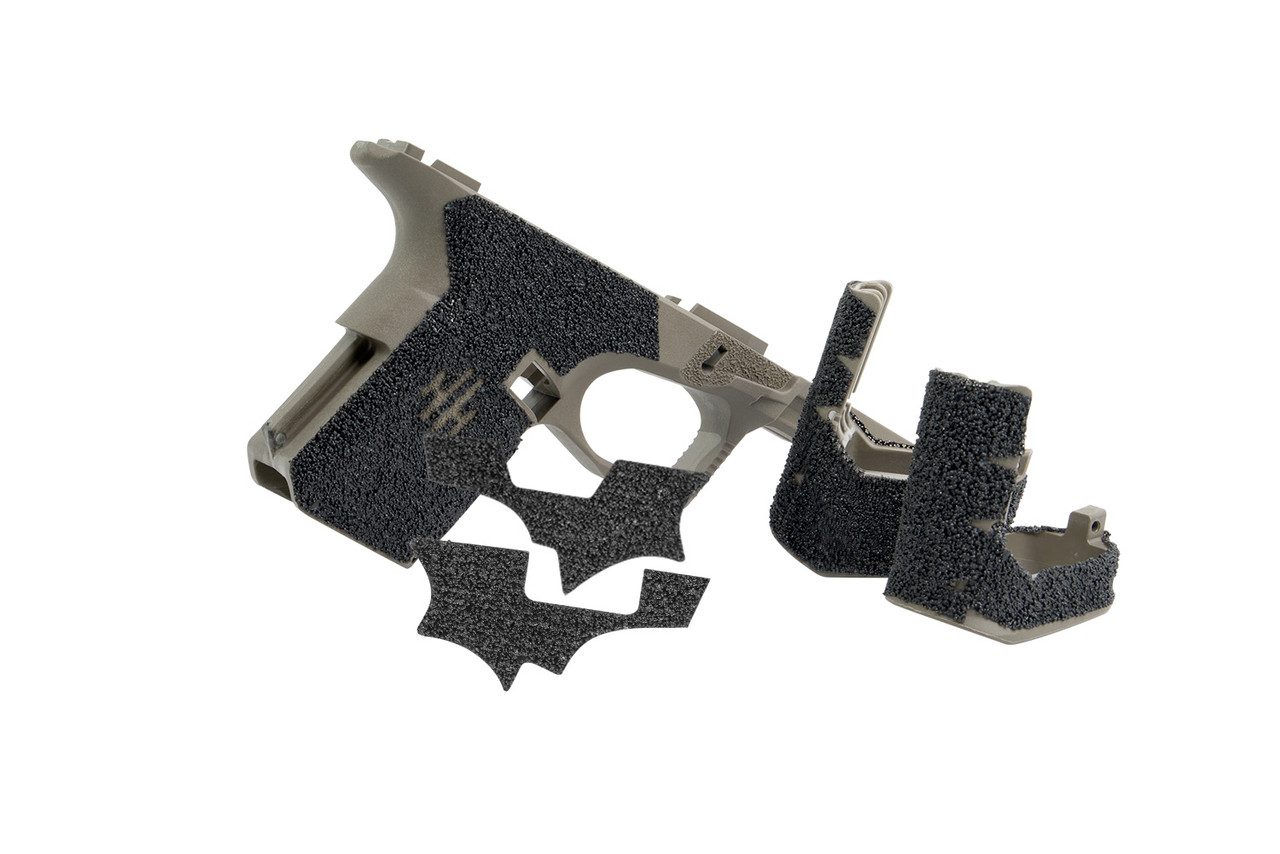
Photo Source: 80 Percent Arms
Since stippling is permanent and has a small chance of disaster, people may opt for a less risky option. Skateboard tape has been used for years on grips, and while it offers great traction, it can be a bit too abrasive at times and does wear out after use.
There are of course aftermarket companies that offer grips for virtually any make and model out there, so definitely do your research before you commit to stippling. If anything, maybe run some semi-permanent grips first, before deciding to commit to stippling. Talon Grips makes a great product, being both affordable, good-looking, and effective.
If you're wary of the commitment stippling involves, we carry some fantastic adhesive solutions from Handle It Grips that were custom designed for our GST-9 frames!
START YOUR NEXT GLOCK STYLE BUILD WITH 80% ARMS!
80% Arms offers a wide variety of Glock 80% lowers, ready to ship to your door! Our MOD1 version of the GST-9 frame offers newly engineered ergonomics, and fantastic grip-mitigating the need for aftermarket grips or stippling. Read our post on how to disassemble a Glock®or browse our selection today and get your new build started!
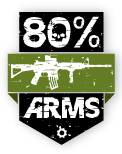


 Back to List
Back to List